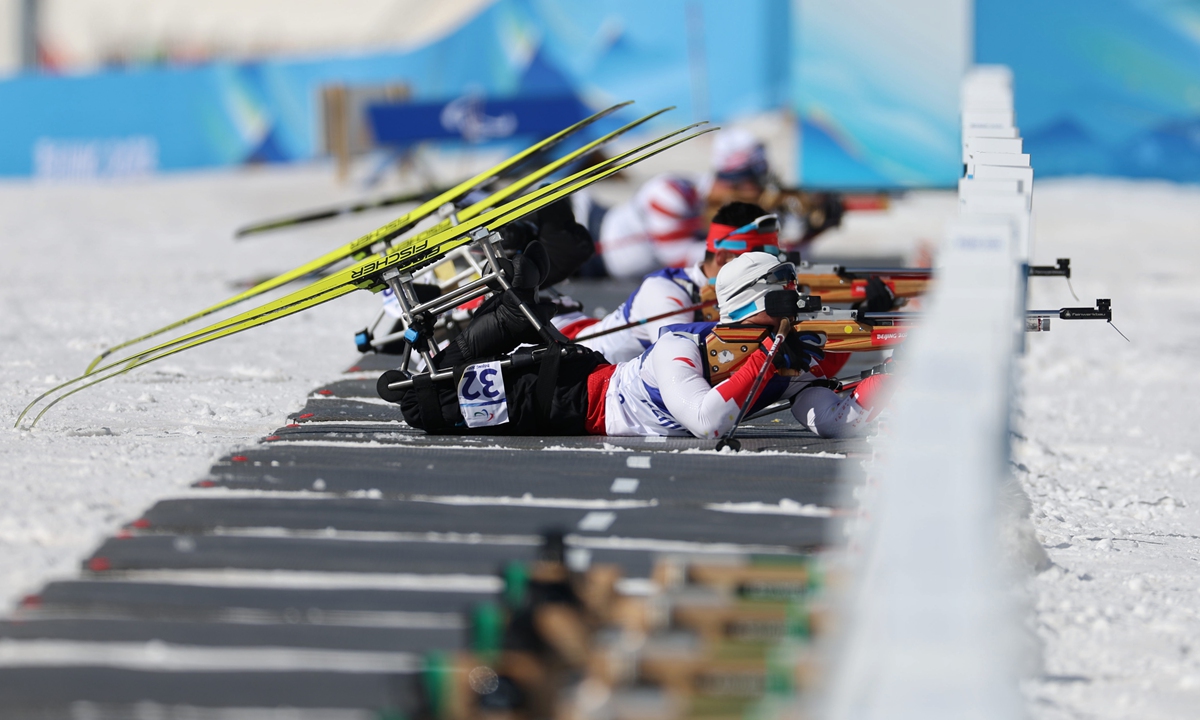
China's Liu Mengtao competes during the para biathlon men's middle distance sitting event of Beijing 2022 Winter Paralympics in Zhangjiakou, Hebei province, March 8, 2022. Photo: IC
How do vision-impaired athletes aim at their targets? Athletes use an audio signal to guide them while aiming, with the audio signal rising in pitch as the point of aim moves nearer to the center of the target.
In the Para Biathlon, athletes with a vision impairment do not shoot bullets, pellets or anything else tangible, but an invisible laser beam. They use standard shooting equipment with a special electronic audio aiming device fitted to the gun.
The aiming device detects the point of aim of the gun relative to the target and provides the shooter, through headphones, different tones indicating the point of aim. The target sends out an infrared signal that is converted into an acoustic signal. The closer the barrel aims at the bull's-eye, the higher the frequency of the sound. Once the sound becomes constant, the athlete is on target.
The biathlon events consist of a 2.0-kilometer or 2.5-kilometer course skied three or five times for a total race distance between 6-15 kilometers. Each race is divided into two or four shooting rounds; athletes must hit two targets located at a distance of 10 meters with a rifle.
When the biathlon was first introduced to the Paralympic Winter Games in Innsbruck, Austria in 1988, only athletes with a physical impairment could compete. Vision-impaired athletes became eligible to compete four years later in Tignes-Albertville, France.




